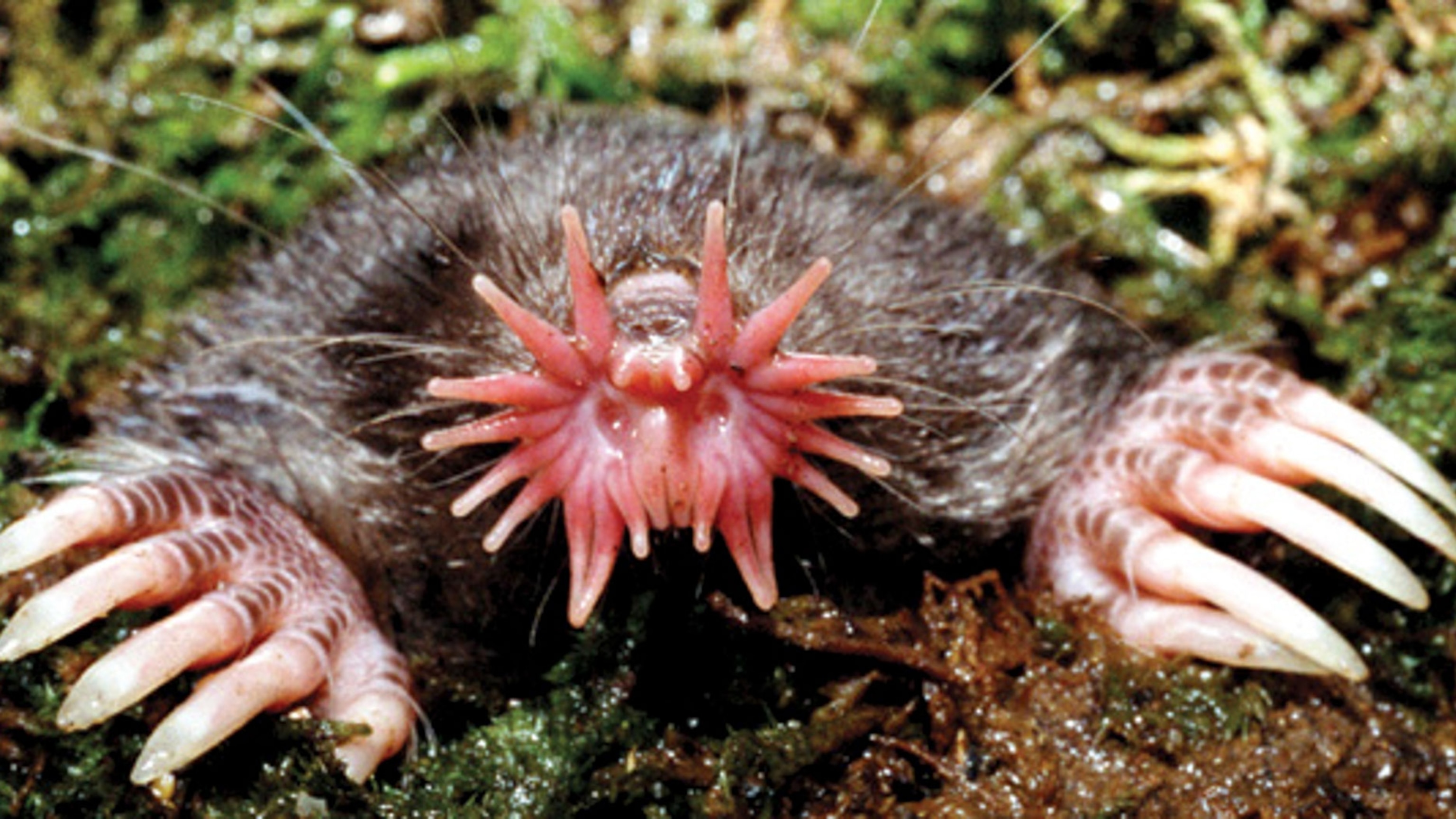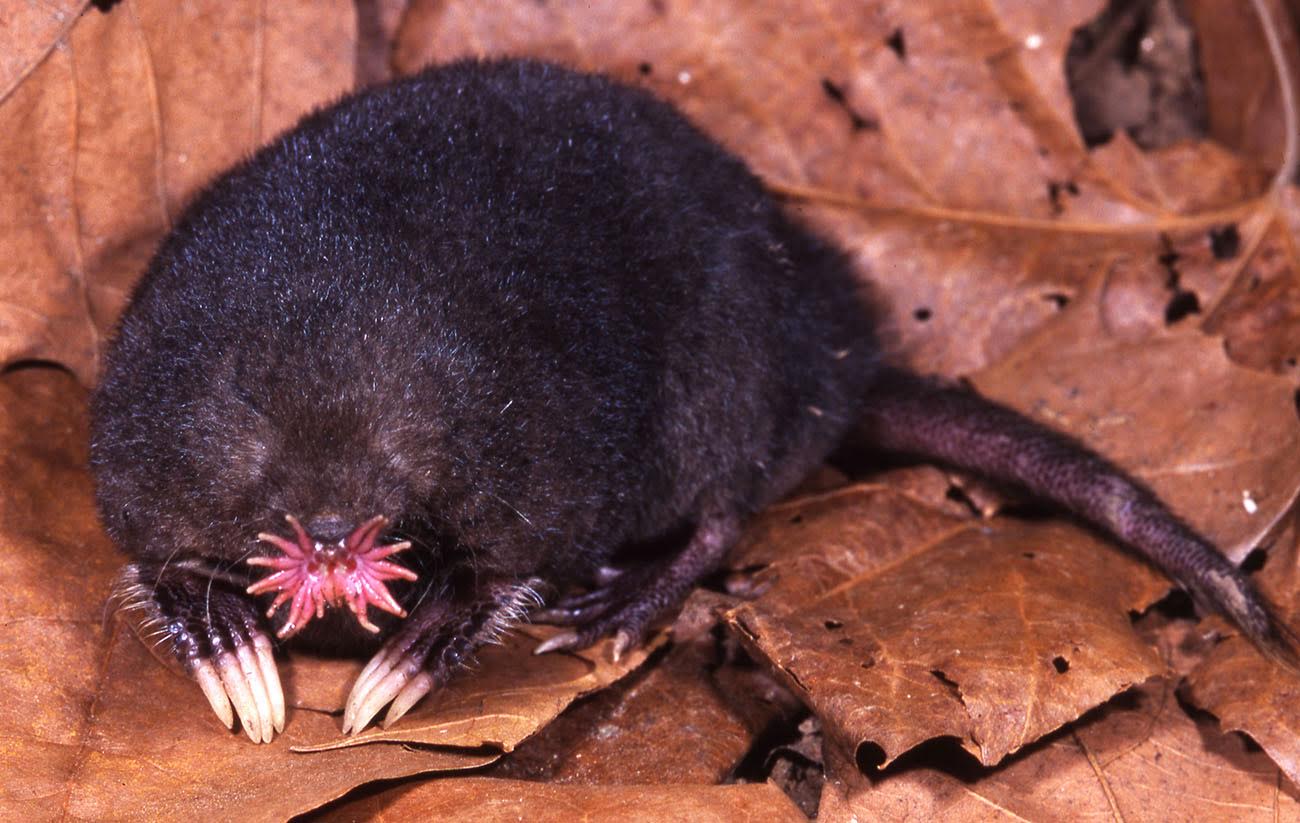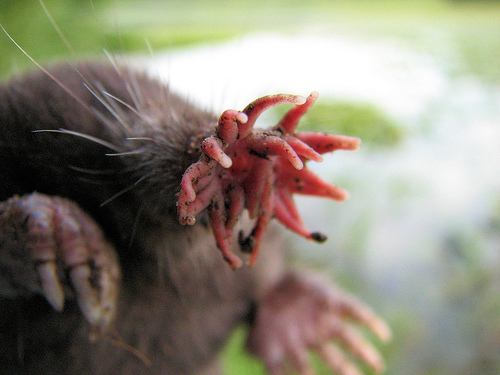Thirty years of research has revealed just how strange the underground animal with the odd nose really is.
A star-nosed mole is surely one of the world’s weirdest-looking animals. If you were to come face to face with one, you might think its head had been replaced by a tiny octopus.
And for an animal that’s nearly blind, the American species is astonishingly speedy: The world’s fastest eater, it can find and gobble down an insect or worm in a quarter of a second.

As the fuzzy little carnivore plows through soggy soils, it bobs its head in constant motion. In the mole’s dark underground world, sight is useless—instead, it feels a world pulsing with prey. The mole hunts by bopping its star against the soil as quickly as possible; it can touch 10 or 12 different places in a single second.
It looks random, but it’s not. With each touch, 100,000 nerve fibers send information to the mole’s brain. That’s five times more touch sensors than in the human hand, all packed into a nose smaller than a fingertip.
And it’s one of two animals in the world known to smell underwater, by blowing air bubbles and sucking them back into its nose.
These are just a sampling of incredible facts about the star-nosed mole, says Ken Catania, a neuroscientist at Vanderbilt University.

“If I’m using the word ‘amazing’ a lot, it’s because I really feel that way about them,” says. In fact, he used the word 10 times in describing them.
On Thursday, Catania will present three decades’ worth of research at the Experimental Biology annual meeting in Chicago, part of a symposium on the world’s most extreme anatomy.
Getting in Touch
As the world’s leading expert on the star-nosed mole, Catania is something of an oddity himself.
Most biologists study a relative handful of species, and some even frown upon students picking a “pet.” But Catania makes a case for studying the world’s weirdos, creatures whose amped-up abilities reveal something about how the rest of us work.
“Evolution has solved a lot of problems in a lot of different ways,” he says. “We can learn so much from that diversity.”

For instance, studying touch in the mole’s sensitive nose has revealed clues to how touch works at the molecular level.
Catania has discovered that a giant star pattern that mirrors the mole’s strange nose is imprinted right into the brain’s anatomy. Each time the mole presses its star to the soil, it creates essentially a star-shaped view of its surroundings, and these images come together in its brain like pieces of a jigsaw puzzle.
Easing Our Pain?
“Compared to the other senses, we know very little about our sense of touch,” says neuroscientist Diana Bautista, who studies pain and itch at the University of California, Berkeley.
When Bautista called Catania out of the blue asking to collaborate, he insisted that she go mole-collecting with him in rural Pennsylvania. Digging for moles in their underground burrows in a wetland was hard work, she says.
The star-nosed is the only mole species—there are 39—that lives in swamps and marshes. Its exquisite snout may have evolved to help it quickly scarf down lots of tiny soft-bodied prey in its waterlogged environment.

Working with Catania, Bautista discovered molecules in the mole’s star that help turn a physical force—whether it’s the brush of a feather or the prick of a needle—into the electrical signals that are the currency of the nervous system.
Because many of these molecules are found in people, too, such understanding might lead to new treatments for pain.
More Mole Mysteries
Catania has many mole mysteries he’d still like to solve—can they feel detailed textures with a single touch of their rays?
What genes and molecules allow the star to develop, and how does its brain so greatly amplify the touch signals coming from its no? The mole doesn’t hibernate in the winter, so how does it keep its sensitive star working when it dives into ice-cold water?

All of these questions require a scientist dedicated to the bizarre—and who isn’t afraid to get wet.




